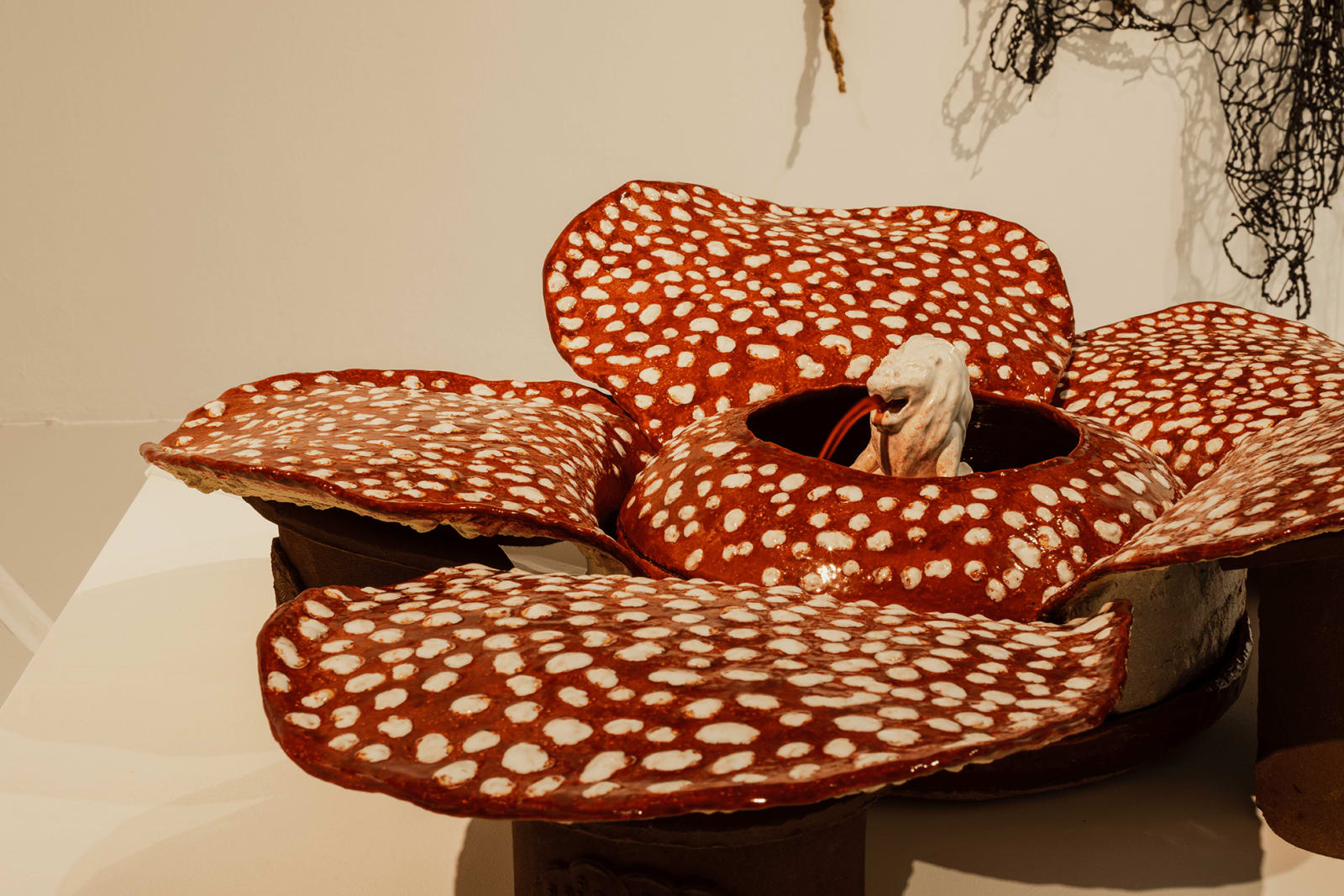Shayne Phua
Padma Malayan, 2021
Ceramic, fountain pump, rose syrup ingredients
Diameter 90cm
Copyright The Artist
Further images
Fountains were originally purely functional to distribute water in ancient civilisations but later became a form of theatre for recreation and entertainment – honouring individuals and events, and decorating city...
Fountains were originally purely functional to distribute water in ancient civilisations but later became a form of theatre for recreation and entertainment – honouring individuals and events, and decorating city parks and squares as we know of today. Shayne Phua draws on the ornate spectacle of the fountain and reimagines it in a new sculptural work that takes the form of a Rafflesia flower. Crowned by a merlion seated in padmasana (lotus pose in yoga), reminiscent of Buddha and Hindu deities in meditation, the work is abound with symbolism in relation to religion, history, tradition, and literature. Phua references the native name of Rafflesia, where it is more commonly known as the Padma Raksasa or giant padma in the region. Padma, in turn, is the Sanskrit word for ‘lotus flower’ and signifies primordial purity and enlightenment. By highlighting the origins of the Rafflesia flower as informed by indigenous communities before its later colonial research and findings, Phua challenges the objectivity of History that often favours the Western perspective. In a playful spin to decolonise our culture, she fills the Rafflesia with rose syrup – an ingredient familiar to many Southeast and South Asia countries for beverages and desserts – and lets its fragrance take one by surprise. Bridging the political and mythical in imaginative and uncanny ways, Padma Malayan ultimately raises questions against the glorification of colonialism in Singapore. It also marks the beginning of Phua’s exploration of fountains as a critical form, a development from vintage pastry moulds in her practice.
Exhibitions
Ornamental ⠂瓖 (2021)12
of
12







